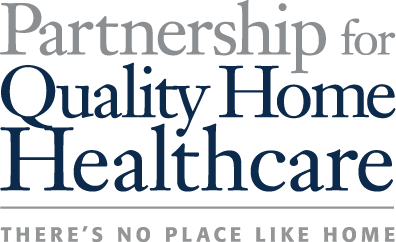September 2, 2021
PQHH Recommends Rescinding Behavioral Assumption Cuts in 2022 Final Payment Rule
Posted in: Press Release
Washington, D.C. –– The Partnership for Quality Home Healthcare – a coalition of home health leaders dedicated to developing innovative reforms to improve the program integrity, quality, and efficiency of home healthcare for our nation’s seniors – submitted comments in response to the Home Health Perspective Payment System (HHPPS) proposed rule for CY 2022. The comments, citing an analysis of federal Medicare data, provide feedback on several important provisions in the proposed rule, including the Centers for Medicare & Medicaid Services’ (CMS) continued implementation of -4.36 percent behavioral adjustment cuts. The Partnership also raises concerns that the annual payment rate update does not reflect rising costs, including labor costs
According to the Partnership’s analysis of CMS data, compiled by Dobson DaVanzo & Associates (DDA), Medicare payments are already 5.76 percent lower than they should be based on the budget neutrality requirements outlined in the Congressionally-passed new payment system, which began in 2020. This runs counter to CMS’ methodology outlined in the proposed rule.
“In the absence of any corrective action, we estimate that CMS’ -4.36 percent behavioral adjustments alone could lead to a reduction of approximately $2.43 billion in payments to home health providers between CY 2020 and CY 2022. Given the cost pressures and the importance of maintaining a viable home health benefit for Medicare beneficiaries, now is not the time to implement further payment reductions. The Partnership urges CMS to rescind the -4.36 percent behavioral adjustment for CY 2022, accept our recommendations for a more accurate assessment of budget neutrality in the PPS for future years,” the Partnership letter states.
“Our comments and the expert third-party analysis offer very technical feedback to CMS’ proposed payment adjustments and methodologies, which we hope will help inform payments that are accurate, predictable, and support access to high quality home healthcare,” said Joanne Cunningham, executive director of the Partnership. “We are concerned that the continued implementation of the -4.36 percent behavioral adjustment cut in 2022 is unjustified and that CMS’ assessment of budget neutrality will lead to additional unsubstantiated cuts in future rulemaking.”
The new findings come shortly after another DDA analysis found that two of the three anticipated behavioral changes that CMS used to justify prospective payment rate reductions have largely not occurred. Specifically, DDA found that low-utilization payment adjustment (LUPA) payments remained higher than projected and clinical groupings reflected historical trends without behavioral adjustments. The data reflect the fact that home health providers did not change their billing behavior to the highest paying diagnosis as CMS assumed they would under PDGM.
In addition to these concerns, the Partnership comments caution that the annual payment rate update does not reflect rising costs of providing care including labor costs and urge CMS to review and incorporate these important considerations before finalizing the rule.
“Now more than ever, older Americans need the option of home healthcare,” continued Cunningham. “CMS’ annual payment update has not kept pace with labor costs and other expenses of home health delivery, which, if not addressed, will continue to impact the stability of our sector. We hope CMS will weigh our comments and analysis heavily when finalizing the rule for 2022.”
# # #
